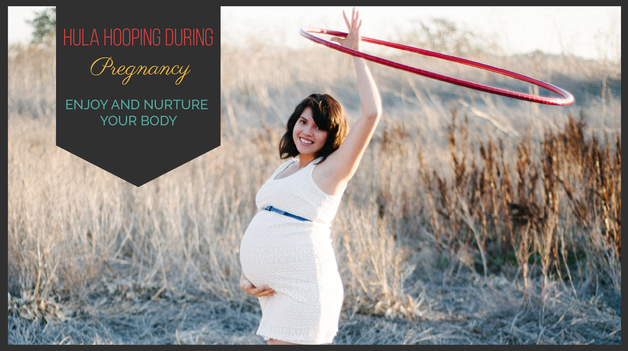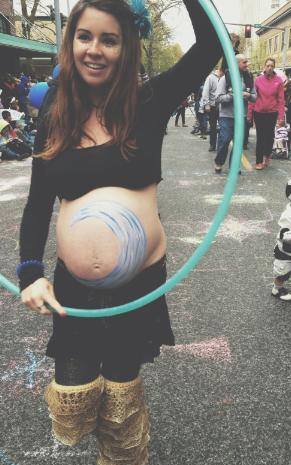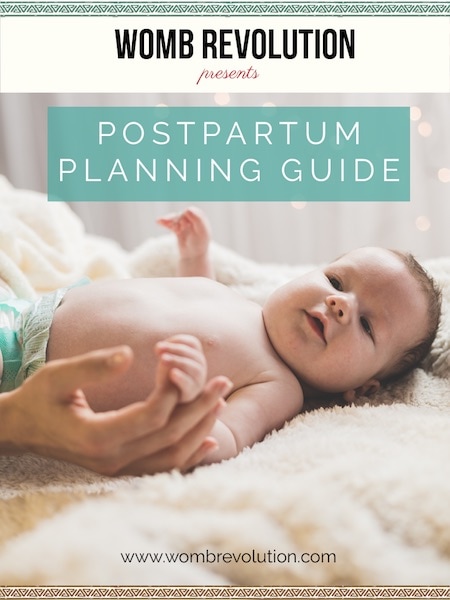Exercise increases our natural vitality by stimulating blood flow and oxygenating the body. It awakens the mind and may also help to ease or prevent depression. It has been known to prevent gestational diabetes, pregnancy pains and aches, and it even helps you sleep better!
In her book ‘The Natural Pregnancy Book,’ M.D. and midwife Aviva Romm writes about this concept.
“On TV and in other media, our culture can be seen as body-image-centered, not body-centered. Most of us relate to our bodies not by what we feel but by what we think we look to others. We base our feelings about our bodies on our appearance. How we think about and care for our bodies is the basis for how we will feel during pregnancy.”
Becoming body-centered is basically learning to listen and understand the language of your body. This can be a challenge because we have learned that fatigue, hunger, sadness, stress, headaches, and most other physical feelings that are uncomfortable can (and should) be suppressed. But these symptoms are the language of our bodies asking us to pay attention and take care of our needs!
By understanding and redefining the relationship you have with your bodies, you will be improving your chances of experiencing pregnancy and birth as a positive events.
|
“Becoming body-centered requires us to be oriented to our physical needs, and this includes spending time enjoying and nurturing our bodies.”
- M.D. Aviva Romm
|
Hula hooping is a low impact exercise that incorporates dancing to enhance flexibility, balance, posture and hand-eye coordination. It strengthens your core and helps work parts of your body that rarely get moving. You can do it pretty much anywhere (all you need is a hoop and a little bit of space) and because hula hoops are commonly used as kid’s toys, they can bring back the playfulness and joy of childhood.
Since I wrote about my experience with hula hooping during postpartum, many people started asking me questions about hula hooping during pregnancy. So I decided to ask Perri Davis, founder of Get Outside Olympia, who hooped all through out her pregnancy!
|
M. When did you start hula hooping?
P. I have always been able to hula hoop, but the connection and flow with the hoop started back in 2012. I got pregnant in 2014 and by that time the love with the hoop was very well established. M. What did your care provider think about the safety of hooping during pregnancy? P. My midwife always encouraged me to trust my body. She advised me not to hoop on my belly as it got bigger, but she encouraged the dancing, flow and exercise. She was all about it. I used a polypro (lighter) hoop and switched to off-body hooping on the second and third trimesters. |
P. I really loved that once I went into labor I channeled that hoop energy. I would say that 75% of the time in my labor I was moving my hips and my body. I just focused on that circular flow, that foundation of hooping. That’s what kept me going every single second to make it to that next second. While I was at home I had my hoop for stretching, I was flowing. That movement I did during my whole pregnancy really helped my daughter move down and come out. So yeah, I love hooping for so many more reasons than I did before I gave birth.
|
"I just focused on that circular flow, that foundation of hooping. The movement I did during my whole pregnancy really helped my daughter move down and come out."
|
P. It was weird! It’s funny, no one ever asked me that question. It was weird hooping with my new self. I wasn’t the old Perri hooper that I knew so well. I was a new mother and this whole other being, and it was just different. It’s still different. I don’t think it will ever be the same.
M. Was it hard to find time to hoop?
P. Definitely. It probably took me two months until the first time I did. I would just strap her on me with the ergo, with the hood up so that her head would be supported. She was pretty much glued to my body and I would hoop. It was at least something for me to feel good and stretch and feel like my old self again. But she was probably about 8 months old when I was able to hoop for more than 10 minutes at the time.
M. Did you have any problems with diastasis recti (abdominal muscle separation)?
P. No, not at all!
The first thing to do is to talk to your care provider about whether or not this type of exercise would be good for your particular case.
If you’re trying to conceive or still on your first trimester, learning the basics of hula hooping around your waist is a great place to start. A bigger hoop will make the movement slower and easier to learn!
If you’re brand new to hula hooping and farther along in your pregnancy, you can start using the hoop to stretch and learn off-body tricks. Persistence is key!
Do you need some guidance? Come celebrate with other expectant and new moms at our Dancing For Birth Summer Party in Olympia, WA! We will be learning some hula hoop basics and a lot of wonderful dance movement that will help you find your flow for pregnancy and labor!



